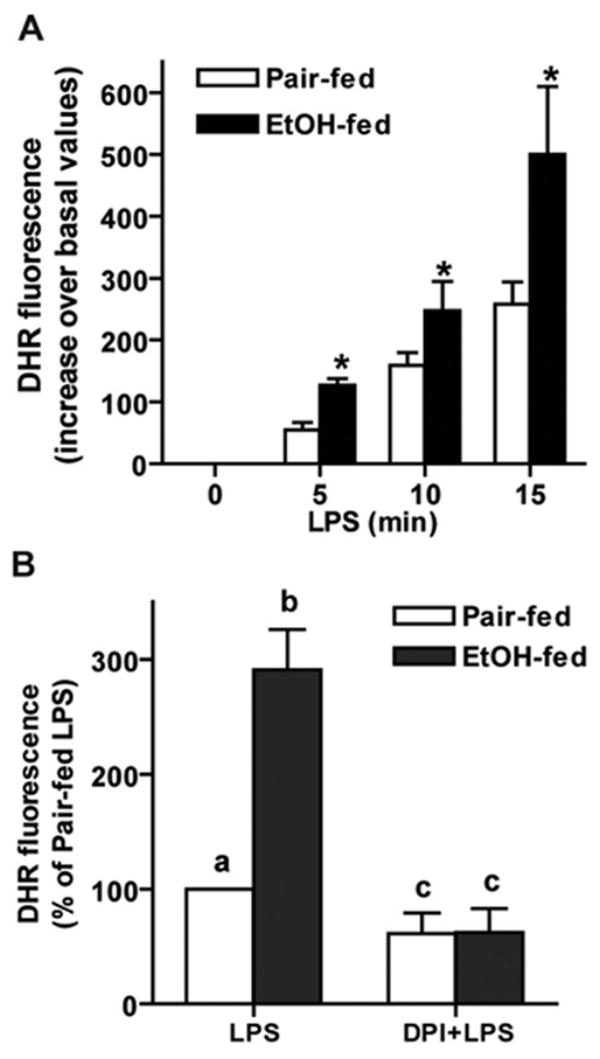Fig. 2.

Chronic ethanol feeding increases LPS-stimulated DHR fluorescence in isolated Kupffer cells, which, isolated from pair- and ethanol-fed rats, were cultured 16–18 h and then stimulated with or without 100 ng/ml LPS for 0–15 min (A). Media were then replaced with 10 μM DHR, and cells were incubated for 15 min. Fluorescence was measured at an excitation wavelength of 505 nm and emission detection wavelength of 530 nm. Values represent mean ± sem, corrected for DHR fluorescence at zero time; n = 5; *, P < 0.05, compared with pair-fed. DHR fluorescence at zero time did not differ between pair-fed (2185± 307 arbitrary units of fluorescence) and ethanol-fed (2135± 290). (B) Pretreatment with DPI chloride decreased LPS-stimulated ROS production. Kupffer cells were treated with or without 10 μM DPI for 2 h and then stimulated with LPS for 5 min, followed by incubation with DHR as described above; n = 13, values with different superscripts; a, P < 0.05 compared with pair-fed cells not treated with LPS; b, P < 0.05, compared with pair-fed cells treated with LPS; c, P < 0.05 compared with cells treated with LPS but not treated with DPI. DHR fluorescence is expressed as percent of pair-fed LPS treated (177±87), as several different lots of DHR were used in these experiments, and each lot had a different relative fluorescence.
